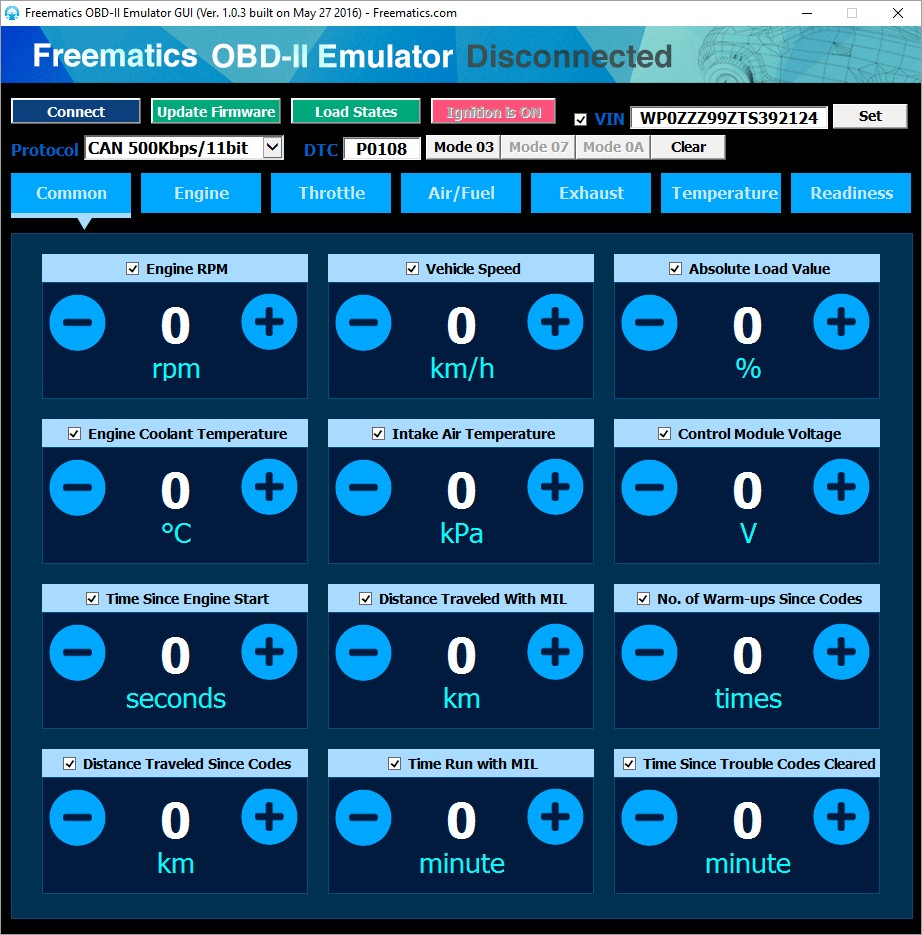An Emulator For Obd2, also known as an OBD2 simulator, is a valuable tool for developers and automotive enthusiasts. It allows you to test and develop OBD2 applications without needing a physical vehicle. The Freematics OBD-II Emulator MK2 is a powerful and versatile emulator for OBD2 that simulates a wide range of vehicle data and protocols. This guide will delve into its features, functionality, and how to get started.
What is the Freematics OBD-II Emulator MK2?
The Freematics OBD-II Emulator MK2 replicates a standard 16-pin female OBD-II port, supporting various data protocols, including KWP2000, ISO9141, CAN bus, and J1850. This emulator for OBD2 responds to requests for standard OBD-II Parameter IDs (PIDs), including Diagnostic Trouble Codes (DTCs) and Vehicle Identification Numbers (VINs), just like a real vehicle. It can simulate up to six active DTCs for modes 03, 07, and 0A, mirroring the behavior of a car experiencing a malfunction.
Key Features and Benefits of this OBD2 Emulator
This emulator for OBD2 is packed with features making it an indispensable tool:
- Comprehensive Protocol Support: Simulates CAN, KWP2000, ISO9141-2, J1850 PWM, and J1850 VPW protocols, ensuring compatibility with a wide range of OBD-II devices.
- Realistic DTC Simulation: Simulates up to six active DTCs, allowing you to test diagnostic tools and applications thoroughly.
- PID Simulation: Simulates OBD-II Mode 01 PIDs (0100-0163), providing access to essential vehicle data.
- VIN and Readiness Monitor Simulation: Enables testing of functionalities related to vehicle identification and emissions readiness.
- Flexible Control Options: Can be controlled via GUI software (USB), Freematics Controller app (BLE for iOS and Android), or programmatically via USB or serial UART interface.
- Easy Firmware Upgrades: Supports firmware upgrades via USB, ensuring you always have the latest features and bug fixes.
Getting Started with the Freematics OBD-II Emulator MK2
Using the emulator for OBD2 is straightforward:
- Power Up: Connect the 12-24V DC power adapter.
- Connect to PC: Connect the emulator to your PC via the provided USB cable. Drivers for Windows 7/8 are installed automatically. Windows XP users may need to download drivers.
- Launch GUI Software: Download and run the Freematics OBD-II Emulator GUI software. Connect to the emulator using the software.
- Connect Your OBD-II Device: Plug your OBD-II device into the emulator’s female port.
- Start Testing: Use the GUI or the Freematics Controller app to manipulate PIDs, set DTCs, and simulate various vehicle conditions.
Using the Freematics Controller App
This emulator for OBD2 also works seamlessly with mobile devices:
- Power Up: Connect the DC power adapter.
- Install App: Download and install the Freematics Controller App from the App Store (iOS) or download the APK (Android).
- Connect via BLE: Launch the app and connect to the emulator via Bluetooth Low Energy.
- Connect OBD-II Device: Plug in your OBD-II device.
- Control Remotely: Adjust PIDs and other parameters directly from your mobile device.
Advanced Features: Serial Control and Customization
The Freematics OBD-II Emulator MK2 offers a serial control interface for advanced users. Using AT commands, you can programmatically control the emulator, integrating it with custom applications and hardware. This opens up possibilities for complex simulations and testing scenarios.
Conclusion
The Freematics OBD-II Emulator MK2 is a versatile and powerful emulator for OBD2, providing a comprehensive solution for OBD-II application development, testing, and diagnostics. Its wide range of features, flexible control options, and ease of use make it an essential tool for anyone working with OBD-II technology. Whether you’re a seasoned developer or a hobbyist, this emulator for OBD2 offers a powerful platform for exploring the world of vehicle diagnostics.

